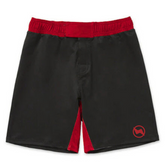Oxygen Deficiency Training for BJJ: Boost Your Conditioning Safely
Brazilian Jiu Jitsu (BJJ) is a physically demanding martial art. It pushes your body to its limits. Every roll, scramble, and submission attempt demands strength, endurance, and mental resilience. Yet, many athletes find that they gas out during high-intensity sparring or competition. Though they often show technical progress. This is where oxygen deficiency training comes into play.
Oxygen deficiency training (ODT) is often associated with high-altitude training. It has become a popular conditioning method for combat athletes, especially in BJJ. The goal is simple: train your body to perform under lower oxygen availability, so that when you return to normal oxygen levels, your endurance, stamina, and recovery improve dramatically.
In this article, we will explore what oxygen deficiency training is and how it can benefit Brazilian Jiu Jitsu practitioners. Moreover, we will see the science behind it, safe training methods, and how to integrate it into your routine. It does not matter if you are a beginner in your first BJJ Gi class or an advanced competitor looking for an edge. ODT can play a role in boosting your performance.
What Is Oxygen Deficiency Training?
Oxygen deficiency training refers to conditioning methods where you intentionally limit the oxygen available to your body during exercise. The purpose is to mimic the effects of training at high altitude, where oxygen levels are naturally lower.
Athletes typically achieve this by:
- Training at high elevations
- Using special masks that restrict airflow
- Performing breath-control drills while rolling or drilling in a BJJ Gi
- Interval-based workouts with restricted breathing patterns
This style of training stresses your cardiovascular and respiratory systems, forcing your body to adapt. The adaptations include improved lung capacity and increased red blood cell production, leading to better oxygen utilization in your muscles.
Why Oxygen Deficiency Training Matters for BJJ
BJJ is unique compared to other sports because of its unpredictable energy demands. A fight might feel slow and controlled one moment and explosive the next. To excel, you need both aerobic endurance and anaerobic power.
Oxygen deficiency training strengthens both systems. By limiting oxygen, you create a controlled stress environment. It forces your body to work harder, building endurance and mental toughness. For athletes training in a BJJ Gi, ODT provides an extra conditioning edge.
Key reasons oxygen deficiency training is valuable for BJJ include:
- Improved Cardio for Longer Rolls: Training under oxygen restriction helps your body process oxygen more efficiently, allowing you to last longer in sparring without feeling drained.
- Better Recovery Between Explosive Bursts: BJJ requires sudden bursts of energy. ODT improves recovery speed, enabling multiple explosive efforts during a roll.
- Increased Mental Resilience: Rolling while exhausted is mentally challenging. Oxygen restriction helps you adapt to discomfort, making competition stress easier to handle.
- Enhanced Grip and Core Endurance: A BJJ Gi match often comes down to grip strength. With ODT, your muscles adapt to lower oxygen availability, improving your ability to hold strong grips longer.
The Science Behind Oxygen Deficiency Training
When you train under oxygen restriction, your body initiates several physiological changes:
- Increased Erythropoietin (EPO) Production: Stimulates red blood cell production, which improves endurance.
- Improved VO2 Max: Enhances your body’s ability to use oxygen during exercise.
- Lactate Threshold Adaptation: Trains your body to buffer lactic acid more efficiently.
- Enhanced Respiratory Muscle Strength: Strengthens breathing muscles, improving efficiency during long rolls.
Safe Methods of Oxygen Deficiency Training for BJJ
Safety is crucial. Training without proper guidance can lead to dizziness, blackouts, or serious health risks. Below are safe and effective methods for incorporating ODT into your routine:
- Controlled Breathing Drills in BJJ Gi: Practice holding your breath during transitions, like guard passes or submission attempts.
- Resistance Masks: Use masks during cardio sessions to strengthen respiratory muscles (avoid during live sparring unless experienced).
- HIIT with Breath Holds: Perform sprints, burpees, or kettlebell swings while controlling or holding your breath.
- Swimming-Based ODT: Swim with limited breaths per lap to build lung capacity with low impact.
- Yoga and Pranayama Breathing: Use breath-control techniques from yoga alongside BJJ drills to increase oxygen efficiency.
Common Mistakes to Avoid
- Training at Maximum Intensity Too Soon: Introduce oxygen restriction gradually.
- Ignoring Recovery: ODT stresses the body; prioritize sleep, hydration, and nutrition.
- Using Training Masks Incorrectly: Masks should supplement, not replace, proper training.
- Skipping Technical Work: Remember, BJJ is a technical art. ODT is a supplement, not a replacement.
How to Integrate ODT Into Your BJJ Training Routine
Here is a sample weekly plan for combining BJJ practice with ODT:
- Monday: BJJ Gi class (technique) + 2–3 short breath-control drills
- Tuesday: HIIT with restricted breathing
- Wednesday: Rest or light Gi drilling with yoga breathing
- Thursday: Sparring in Gi with controlled oxygen restriction
- Friday: Swimming or running with breathing limitations
- Saturday: Strength training with core and grip endurance focus
- Sunday: Rest and recovery
The Mental Benefits of Oxygen Deficiency Training
Beyond the physical adaptations, ODT provides mental benefits:
- Stay calm when fatigued
- Manage stress under duress
- Push past discomfort while maintaining technical precision
Mental toughness often determines victory in BJJ. ODT builds resilience to keep pushing when your body wants to quit.
Final Thoughts
Oxygen deficiency training offers a powerful way for BJJ athletes to enhance endurance, speed up recovery, and sharpen mental resilience. Whether you are training in a Gi, working on explosive guard passes, or preparing for competition, this method can give you the edge you need.
However, safety must come first. Start gradually, listen to your body, and use oxygen restriction as a supplement to—not a replacement for—solid BJJ training. When applied correctly, ODT can transform your conditioning and help you dominate on the mats.





